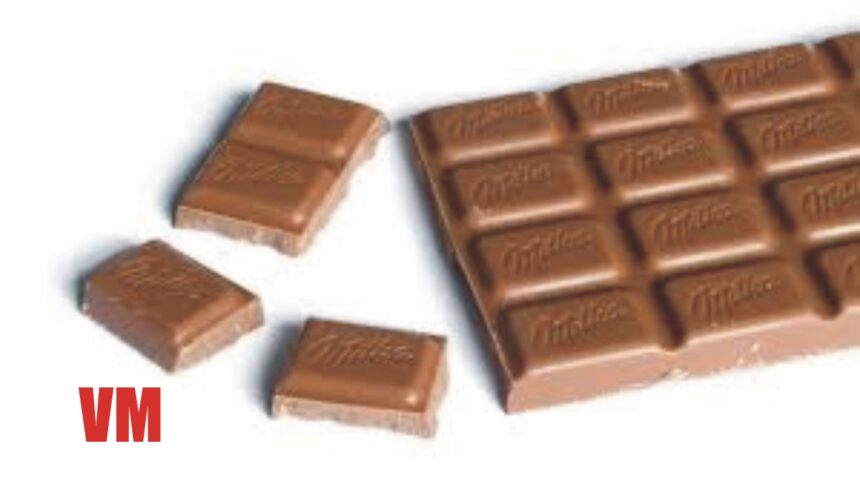Milk chocolate has a special place in the hearts of sweet lovers around the globe.
Its creamy texture and rich flavor make it an irresistible treat for many.
From childhood memories of candy bars to gourmet desserts, milk chocolate is everywhere, weaving itself into our lives in delightful ways.
But what is it about this delectable confection that captures our taste buds so effortlessly? Is it just its sweetness, or does something deeper drive its enduring popularity? Join us as we delve into the history of chocolate, explore its unique qualities, and uncover why it continues to reign supreme among chocolates today.
Whether you’re a casual snacker or a devoted chocoholic, there’s always more to discover about your favorite indulgence!
The History of Milk Chocolate
The journey of milk chocolate began in the 19th century, revolutionizing how we enjoy this sweet treat. Although chocolate itself dates back to ancient Mesoamerican cultures, it was originally consumed as a bitter beverage.
In 1847, Joseph Fry created the first solid chocolate bar by mixing cocoa powder with sugar and cocoa butter. This paved the way for further innovation. In 1875, Daniel Peter teamed up with Henri Nestlé to create the first chocolate by adding condensed milk to their blend.
This breakthrough introduced a creamy texture that appealed to many palates. As production techniques improved and mass marketing took off in the late 1800s, chocolate surged in popularity.
By the turn of the century, brands like Cadbury and Lindt had launched their own versions, making it accessible to a wider audience than ever before. chocolate quickly became an essential part of confectionery culture worldwide.
What Makes Milk Chocolate Different?
Milk chocolate stands out from other types of chocolate due to its creamy texture and sweet flavor profile. It combines cocoa solids, cocoa butter, milk powder, and sugar. The addition of milk gives it that rich creaminess which many find irresistible.
The balance between sweetness and the subtle bitterness of cocoa makes chocolate appealing to a wide audience. Unlike dark chocolate, which can be intense, milk chocolate offers a gentler taste experience.
Another distinguishing factor is its lower cocoa content. While dark varieties may contain 70% or more cocoa solids, chocolate typically ranges from 10% to 50%. This allows for a softer mouthfeel and an easily approachable flavor.
Additionally, the melting point of milk chocolate is generally lower than that of dark or white chocolates. This characteristic enhances its melt-in-your-mouth quality—an essential trait loved by many chocoholics around the globe.
Health Benefits of Milk Chocolate
Milk chocolate often gets a bad rap for being indulgent, but it actually offers some surprising health benefits. One of the key advantages lies in its cocoa content, which contains flavonoids. These powerful antioxidants can help improve heart health by enhancing blood flow and reducing inflammation.
Another benefit is its ability to boost mood. Chocolate triggers the release of endorphins, our body’s natural feel-good chemicals. It also contains serotonin precursors, which may help alleviate stress and anxiety.
Moderation is crucial though; enjoying milk chocolate as an occasional treat can satisfy your sweet tooth while providing these perks. Additionally, when combined with nuts or fruits in recipes, it enhances nutritional value without compromising on flavor.
So next time you indulge in a piece of chocolate, remember that it’s not just about pleasure—there’s more than meets the eye!
The Impact of Marketing on Popularity
Marketing has played a crucial role in the rise of milk chocolate’s popularity. From classic ads to modern digital campaigns, brands have created powerful narratives around this beloved treat.
The imagery used often evokes nostalgia and happiness, effectively drawing consumers in. Chocolate commercials frequently feature families sharing moments together or friends enjoying sweet treats at celebrations. This emotional connection resonates deeply with audiences.
Influencer marketing has also shifted perceptions about chocolate. Social media platforms showcase not just the product but creative ways to enjoy it, making it trendy among younger generations.
Limited edition flavors and seasonal packaging further elevate its desirability. These strategies keep consumers engaged and excited about what’s next on the shelf.
As brands compete for attention, they continually innovate marketing tactics that highlight milk chocolate as more than just a snack—it’s an experience worth savoring.
The Versatility of Milk Chocolate in Recipes
Milk chocolate is a beloved ingredient that adds richness and sweetness to countless recipes. It melts beautifully, making it perfect for drizzling over desserts or incorporating into creamy sauces.
Baking enthusiasts often turn to chocolate for cookies, cakes, and brownies. Its smooth texture creates a delightful contrast against chewy or crunchy elements. Imagine biting into a soft cookie filled with gooey milk chocolate chunks; the experience is nothing short of blissful.
Beyond traditional sweets, milk chocolate can elevate savory dishes too. A touch of it in chili or barbecue sauce introduces an unexpected depth of flavor that surprises the palate.
For those looking to experiment, consider using milk chocolate in homemade granola bars or smoothies. The possibilities are endless! Whether it’s paired with nuts, fruits, or spices, this versatile treat brings joy and indulgence to every culinary creation.
Alternatives to Traditional Milk Chocolate
While milk chocolate reigns supreme, there are plenty of alternatives for those looking to mix things up. Dark chocolate offers a richer flavor and higher cocoa content, appealing to health-conscious consumers. Its antioxidants can provide numerous benefits.
For a twist on tradition, consider white chocolate. Though technically not true chocolate due to the absence of cocoa solids, it brings a creamy sweetness that many adore.
Carob is another interesting substitute. Often used as a healthier alternative, carob has a naturally sweet taste and contains no caffeine or theobromine found in traditional milk chocolate.
Vegan options have also emerged with brands creating plant-based milk chocolates using almond or oat milk. These cater to those avoiding dairy without sacrificing indulgence.
Nut butters blended with cacao create an exciting fusion that’s both nutritious and delicious. Each alternative brings its own unique flavor profile while catering to various dietary preferences and lifestyle choices.
Conclusion: The Timeless Popularity of Milk Chocolate
Milk chocolate has carved out a special place in the hearts of millions around the world. Its rich, creamy texture and sweet flavor make it an irresistible treat for many. The history behind its creation adds depth to its allure, showing how innovation transformed simple cocoa into a beloved confection.
What sets milk chocolate apart is not just its formulation but also the emotional connections it fosters. From childhood memories of candy bars shared with friends to romantic gestures involving gourmet chocolates, these experiences create lasting impressions.
Health benefits further enhance its appeal. While moderation is key, enjoying milk chocolate can provide antioxidants and even boost mood—two factors that draw people back for more.
Marketing plays a significant role as well. Brands have masterfully crafted narratives around milk chocolate that resonate with consumers on multiple levels. This strategic promotion keeps it at the forefront of our minds whenever we seek comfort or indulgence.
Versatility is another compelling feature of milk chocolate. It finds itself in various recipes—from pastries to savory dishes—making it suitable for any occasion or palate.
For those seeking alternatives, options like dark chocolate or vegan variations offer different tastes and benefits without losing the essence that makes milk chocolate so cherished.
The enduring popularity of this delightful treat speaks volumes about our collective love for sweetness and comfort in life’s simple pleasures. Each bite reminds us why we keep coming back for more.




